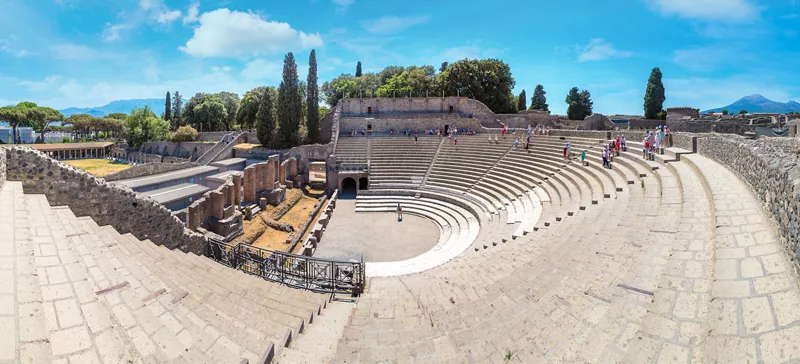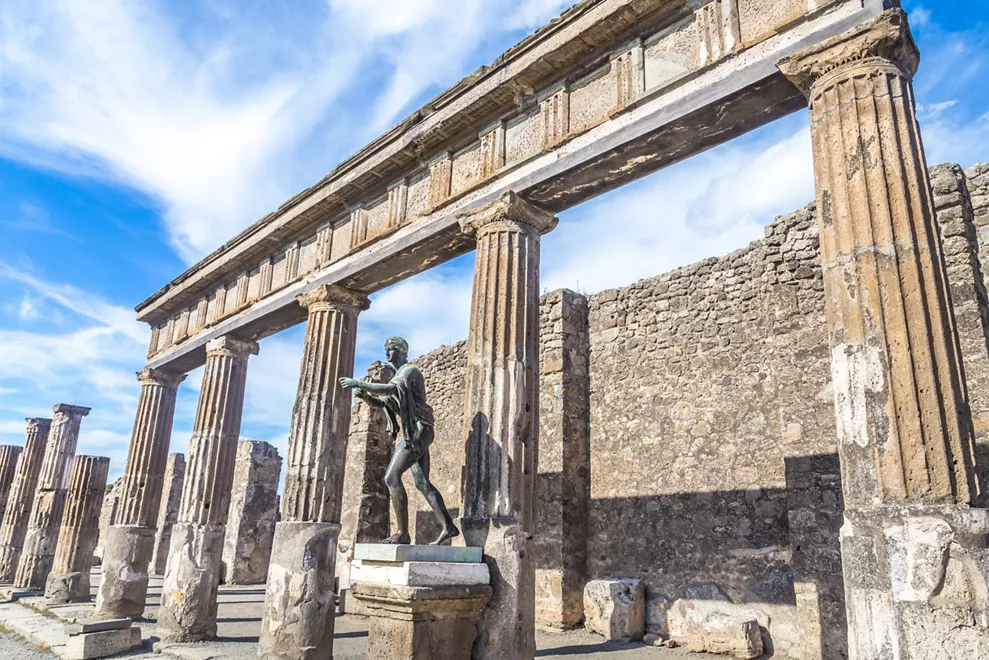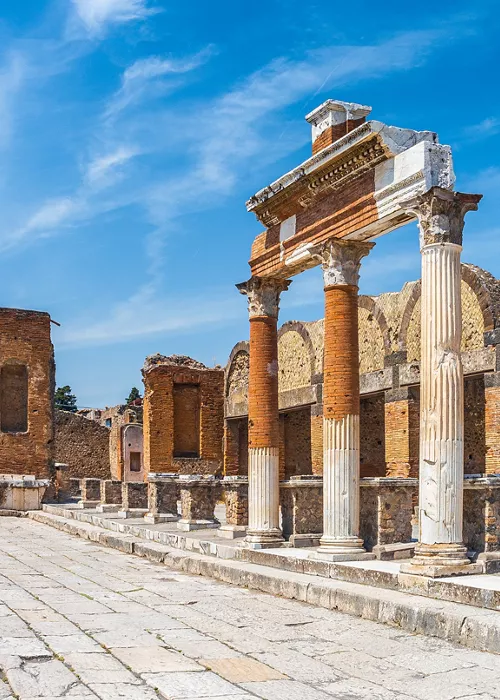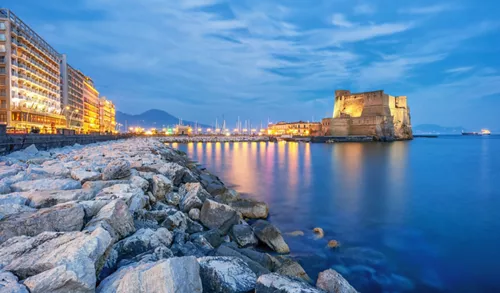Discovering the archaeological area of Pompeii, Herculaneum and Torre Annunziata
4 minutes
This jewel near Naples, in Campania, which lets you travel back in time, has long held the record as the most visited place in the world. The archaeological area of Pompeii, Herculaneum and Torre Annunziata is among the 58 Italian UNESCO sites in the World Heritage List. It never ceases to amaze, giving you the opportunity to explore the extent of the commercial city of Pompeii, the fewer but better-preserved remains of the ancient town of Herculaneum and the frescoes of the Villa Oplontis in Torre Annunziata, which portray the opulent lifestyle of the wealthy classes at the beginning of the Roman Empire.
Why the archaeological site of Pompeii, Herculaneum and Torre Annunziata became a UNESCO World Heritage Site

The Archaeological Area of Pompeii, Herculaneum and Torre Annunziata is the only place in the world that provides a complete picture of an ancient Roman city, comprising three archaeological areas: the ancient cities of Pompeii and Herculaneum with the Villa of the Mysteries and the Villa of the Papyri, plus the Villa of Poppea and the Villa of Lucius Crassus Tertius in Torre Annunziata.
These sites have been made increasingly accessible to the public since the mid-18th century. The excavations of Pompeii, covering 44 hectares, have revealed the ancient urban neighbourhoods with their Roman villas, the main forum surrounded by large buildings such as the Capitolium, the Basilica and the temples, and several public baths, theatres and an amphitheatre. The archaeological site offers an insight into, on the one hand, the pagan world, represented by what remains of one of the richest Roman cities and, on the other, the Christian spirituality that makes it a popular pilgrimage destination.
The excavations at Herculaneum have uncovered even better-preserved artefacts. Although many areas of the ancient city still lie buried under the modern town, there is plenty to explore through a network of 18th century tunnels. A true open-air museum with commercial and residential buildings that seem crystallised in the distant past.
The two Roman villas in Torre Annunziata, Villa Oplontis (better known as Villa Poppea) and the Villa of Lucius Crassus Tertius, are valuable examples of suburban buildings near Pompeii. The first is a huge residence by the sea with magnificent murals, the other is a rustic dwelling with rooms dedicated to commercial activity. In short, you will be treated to an unparalleled and exceptional representation, still very much alive, of daily life in Roman times.
What to see in Pompeii, Herculaneum and Torre Annunziata: six unmissable stops

The archaeological area is so extensive and rich in attractions that it is best to plan ahead so you don’t miss out on the best sites!
- Pompeii: your first destination in Pompeii should be the Villa of Mysteries. It takes its name from the room overlooking the sea, featuring a large fresco on three walls, one of the best-preserved examples of ancient artwork, depicting a mystery ritual. Then there is the House of the Faun, one of the largest residences in Pompeii. Covering 3,000 square metres, it is a wonderful testimony to the wealth of its owner.
- Pilgrims should definitely stop by the Sanctuary of the Blessed Virgin of the Rosary.
- Herculaneum: here we start with the Villa of the Papyri, so called because its library contained 1,800 papyri, some of which were able to be recovered because they were not carbonised, but rather underwent a process of mineralisation. This enormous house has a very long porch overlooking the sea. Next, you simply must take a trip to the House of the Deer in Herculaneum, a luxurious residence with a terrace overlooking the sea that belonged to Quintus Granius Verus, a citizen freed from slavery shortly before the eruption.
- Torre Annunziata: this city is the site of the excavations of Oplonti, once a peripheral area of Pompeii, offering an experience of a district more than a fully-fledged urban city.
- These excavations consist of two villas, with the opportunity to visit the Villa of Poppaea Sabina, Nero's second wife. This monumental residence, which even contained a small spa complex, is full of beautiful frescoes that play with perspective.
We recommend taking a guided tour of Pompeii, Herculaneum and Torre Annunziata to best immerse yourself in the charm of the sites and discover their secrets
What to eat in Pompeii, Herculaneum and Torre Annunziata: five delicacies

When in the Vesuvius National Park, and in general in the vicinity of Naples, you are sure to be treated to an unforgettable gastronomic adventure. Where to begin?
In Pompeii, without a doubt, a plate of spaghetti with clams, perhaps preceded by a starter of anchovies in scapece, that is, floured and fried, then dressed in a vinegar-based marinade.
You are also sure to be delighted by the cianfotta di Ercolano, a tasty vegetable dish similar to ratatouille.
When you arrive in the Torre Annunziata area, be sure not to miss the octopus alla luciana, cooked like a casserole with tomato, garlic, Gaeta olives and capers.
To end your culinary discovery on a high note, look no further than the sfogliatella riccia, made of crispy layers of puff pastry filled with ricotta and candied fruit.

Another remarkable construction is the House of Mysteries, which derives its name from the murals depicting the initiation rites (i.e., the mysteries) of the Dionysian cult. A peculiar characteristic of Pompeii is the florid graffiti covering the walls in just about every building this is because when the volcanic eruption happened, Pompeii was set to carry out elections in the days ahead – hence the writings and ideograms, which feature both political and sexual content.
























